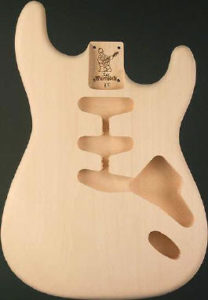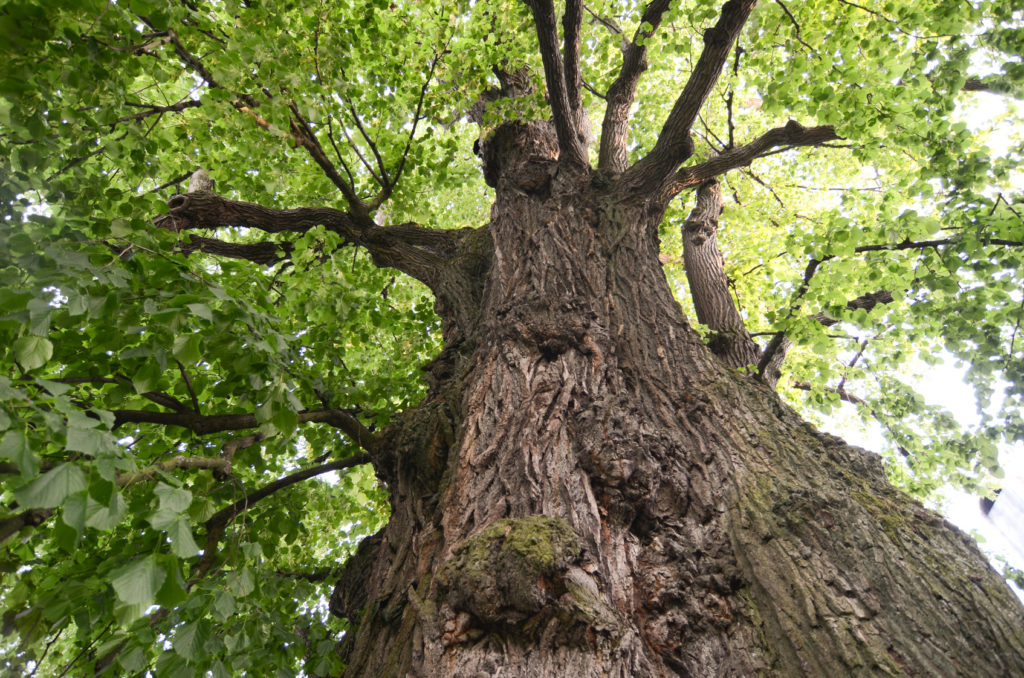
Biggest, bigger, and big basswoods.
Many people crap all over basswood.
Why?
Because basswood is inexpensive and plentiful. It’s a common wood, used for guitar and bass bodies in a variety of styles, usually in low-end to mid-range instruments. More expensive instruments tend to use more traditional “tone woods,” like ash, mahogany, and alder. Want to learn more about tone woods? Click here or here.
Does basswood sound bad?
No. It sounds damn fine. The basswood instruments I’ve made/played offered a very neutral, natural tone. There are no colorful bass and mid-range overtones like the kind you’ll find in mahogany, or the singing treble of ash. What basswood delivers is a clear, even tone across the sound spectrum. It’s not the most exciting tone, but it’s clear and true. Besides, when it comes to electric guitars, pickups, amplifiers, and effects pedals shape your sounds as much as — if not more than — the type of body wood.
Why hate basswood?

A classic/common basswood Strat-style body.
Because it’s inexpensive and plentiful (see above), the perception is that basswood is a lesser-quality tone wood than ash/mahogany. This is true, but the difference is not as great as the gap in price suggests.
Basswood comes from the linden tree. Perhaps you recall “Under der Linden” a famous poem written by the medieval German lyric poet Walther von der Vogelweid. Written nearly 900 years ago, the poem features two lovers getting hot and heavy beneath a linden tree.
Basswood is for lovers!

Eco-friendly farming ensures we’ll never run out of basswood!
Don’t believe me? Consider what the fine folks at The Dreaming Wood —paganism, natural history, witchcraft—say about the linden tree:
“The Linden tree (genus Tilia, also called Lime), shares much of the common symbolism associated with any Sacred Tree in European lore: It’s presence protects against ill luck and against the strike of lightning, and it’s bright nature repels those spirits that would cause harm to the household.
It seems that the Linden tree has been used by poets through the ages as a metaphor for the beauties of Nature, as a tree of grace and peace. In my on-line research I often found repeated the claim that the Linden tree belongs to Freyja, and is the Tree of Lovers. This specific symbolism isn’t ancient, rather it sprung from the font of 19th Century Romanticism. Even so – the Linden has been for the Central Europeans a romantic image for centuries.
Both the European and American Lindens flower in early summer, and the flowers have a wonderful heady sweet scent. (Demeter Perfumes, known for their unconventional fragrances, has a Linden scent, which I have and quite like). The flowers of Tilia cordata (Little-leaf Linden) are used medicinally in tea which is taken for colds and coughs, to break fevers, or against anxiety. Linden flower honey is considered an especially fine variety.
I regard the Linden as a bright tree of grace and protection; a tree of the powers of Summer and the Bright Half of the Year. My seidhr-staff is a linden branch, and serves well as a link to the World Tree, roots and branches both. Some of this tree’s familiar symbolism is that of the Romantic poet and the dreamer, rather than being attested by ancient myths. Still, the Linden is a tree of power, Holy among the Slavic peoples, a green arched temple of sweet blossoms aswarm with bees.”

The mighty linden!
Linden trees grow fast and straight. Thanks to eco-friendly lumbering, there’s no danger basswood will ever become scarce. Don’t fear basswood instruments — it’s the wood of poets and dreamers…like you!



